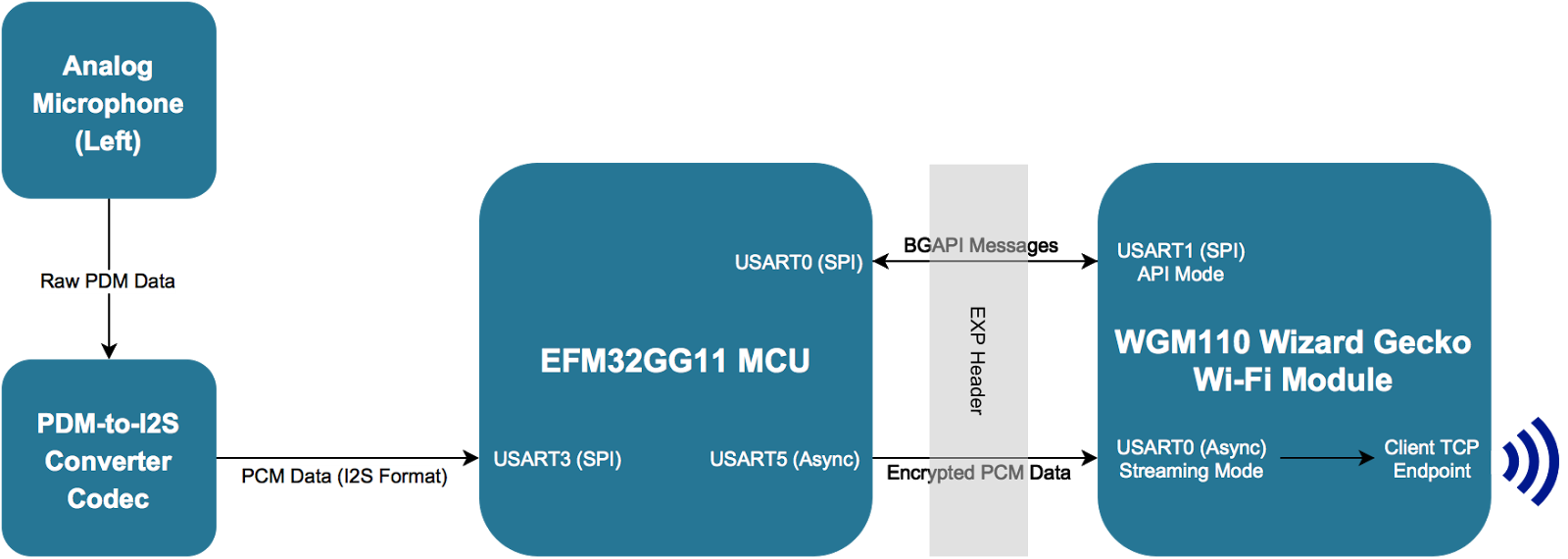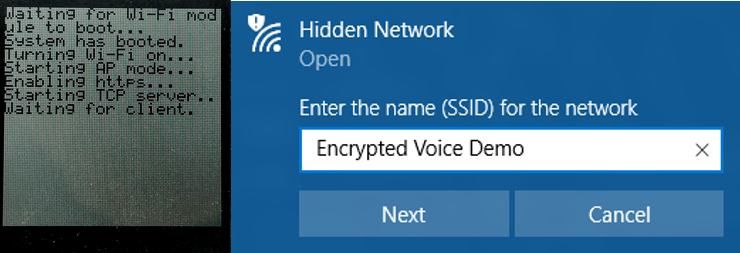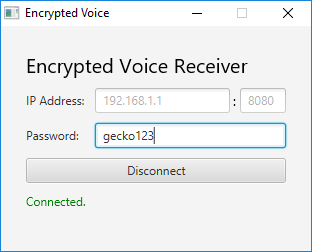- Home
- Symmetry Blog
- From Silicon Labs: Wireless Encrypted Voice Communication with the EFM32GG11
From Silicon Labs: Wireless Encrypted Voice Communication with the EFM32GG11
About Symmetry Electronics
Established in 1998, Symmetry Electronics, a Division of Braemac, is a global distributor of electronic components and systems. Combining premier components and comprehensive value-added services with an expert in-house engineering team, Symmetry supports engineers in the design, development, and deployment of a broad range of connected technologies.
Exponential Technology Group Member
Acquired by Berkshire Hathaway company TTI, Inc. in 2017, Symmetry Electronics is a proud Exponential Technology Group (XTG) member. A collection of specialty semiconductor distributors and engineering design firms, XTG stands alongside industry leaders TTI Inc., Mouser Electronics, and Sager Electronics. Together, we provide a united global supply chain solution with the shared mission of simplifying engineering, offering affordable technologies, and assisting engineers in accelerating time to market. For more information about XTG, visit www.xponentialgroup.com.

This project is created by Silicon Labs’ summer intern Kevin Black.
Project Summary:
The goal of this project was to perform one-way, encrypted, real-time, wireless voice communication from an embedded system to an arbitrary client like a laptop or tablet. This was accomplished using the EFM32GG11 starter kit for audio input/processing and the Wizard Gecko Wi-Fi expansion kit for wireless transmission. Audio data is sampled from the starter kit’s onboard microphone and encrypted with AES using the GG11 32-bit MCU; it is then streamed to any clients connected to the Wizard Gecko’s Wi-Fi access point, where it can be decrypted and played back only with the correct password.
Background and Motivation:
My project primary purpose was to demonstrate useful features of both the EFM32GG11 starter kit and the Wizard Gecko Wi-Fi expansion kit, as well as the two working smoothly in conjunction through the EXP header.
The first main feature it demonstrates is the EFM32GG11’s CRYPTO module, which exists on all the EFM32 Series 1 devices and provides fast hardware-accelerated encryption. The project utilizes the mbed TLS library configured to use the CRYPTO module, which speeds it up significantly. It demonstrates the high throughput of the CRYPTO module (up to ~123 Mbps max*) by encrypting uncompressed audio in real time with plenty of overhead. The type of encryption is 256-bit AES in CBC mode, which is currently considered universally secure.
(*Assuming 256-bit AES on the GG11 driven by HFRCO at 72 MHz)
Another motivation behind the project was to demonstrate two features of the GG11 starter kit itself: the onboard microphone, and the ability of the Wi-Fi expansion kit to easily attach to and be controlled through the EXP header. No examples existed for the microphone, and very few firmware examples existed for the Wizard Gecko in externally hosted mode. My projects demonstrate the quality of the built-in microphone by allowing the user to listen to the audio, as well as shows how to use the BGLib C library to communicate with the Wizard Gecko from an external host. Additionally, it demonstrates the throughput of a transparent/streaming endpoint on the Wizard Gecko.
Project Description:

Block diagram of data flow through transmitter device
Microphone Input:
The GG11 starter kit provides an onboard audio codec that automatically converts the PDM (pulse density modulation) data from the onboard MEMS microphones into PCM (pulse code modulation) data and outputs it on a serial interface in I2S format. The codec’s serial interface is connected to the GG11 USART3 location 0 pins, so reading in the audio data is simply a matter of initializing USART3 to I2S with the correct settings, enabling autoTx, and asserting an additional microphone enable pin.
The audio data arrives in 32-bit words, so the sample rate is controlled by setting the I2S baud rate to 64 times the desired sample rate (2 channels, 32 bits each). Each word contains a single 20-bit sample of audio, but very few systems support 20-bit audio, so for my project, I ignore the least significant 4 bits of each sample and only read 16 bits from each word. I also ignore samples from the right microphone, meaning the final audio data I obtain for processing is in 16-bit mono PCM format. The sample rate is easily configurable, but in the end, I settled on 20 KHz as that seems to be the upper limit of what the Wizard Gecko can handle while being high enough to cover the range of human hearing and provide clear and understandable audio.
The audio input data is transferred into memory using LDMA in order to save CPU cycles. The right channel data is repeatedly written to a single byte in order to discard it, while the left channel data is alternately transferred into two 16-byte buffers; when one buffer is being filled, the other is being processed by the CPU.
Encryption & Transmission:
When a left channel transfer completes, it triggers an interrupt that switches the current process buffer and signals that the next packet is ready to be processed. The GG11 then encrypts the current 16-byte buffer (16 bytes is the AES block size) using the mbed TLS library configured to use the CRYPTO module. In CBC (cipher block chaining) mode, the library automatically XORs the plaintext with the previous ciphertext before encryption.
The 256-bit key used for encryption is derived from a password using SHA-256. Only clients with the same password can obtain the correct key by hashing the password.
In my project, I decided to fix the initialization vector as all zeros. Normally, initialization vector reuse is considered bad practice and weak security; however, it only has the potential to leak data from the first few blocks of data streams with identical prefixes, and that poses an insignificant threat to my project due to the enormous quantity of blocks and the amount of noise in a meaningful segment of audio.
Once a block is encrypted, it is put into a first-in-first-out queue where it is transmitted over UART through the EXP header to the Wizard Gecko. Flow control is implemented using an additional CTS (clear to send) pin connected to the Wizard Gecko; the module can drive CTS high when it cannot keep up with the transmission rate, in which case the transmission halts and the queue fills up. The transmission is driven by interrupts, which allows it to run “in the background” while the next buffer is being encrypted, and does not block the main thread when the Wizard Gecko raises CTS.
The baud rate for UART transmission is configurable as long as the GG11 and the Wizard Gecko are both configured to the same value. Interestingly, however, the Wizard Gecko seemed to perform better (raise CTS for less time) at higher baud rates— perhaps because that increases the gap between packets— so I settled on 3 MHz.
Wi-Fi:
The Wizard Gecko Wi-Fi module, when connected to an external MCU in hosted mode, operates in a command-response format. The GG11 sends commands through the EXP header via SPI, formatted with a binary protocol called BGAPI. When the Wizard Gecko is ready to send a response (or an event) back to the MCU, it raises a notify pin (also connected to the EXP header) that tells the GG11 to read and handle the message. All of the BGAPI commands and responses are defined in a C library called BGLib.
Upon initialization, my project configures the Wizard Gecko to be a hidden wireless access point and a TCP server. When a client connected to the access point opens a connection to the IP address and port of the TCP server, it triggers an event that is forwarded back to the GG11. The GG11 then enables the microphone and begins encrypting and transmitting audio via UART to the Wizard Gecko’s second USART interface (the one not used for BGAPI commands). That interface is configured in transparent/streaming mode, which means it forwards all received data unmodified to a single endpoint. Before the encryption starts, the GG11 configures this endpoint to be that of the connected client.
Accomplishments, Flaws, and Next Steps:
Ultimately, the project was successful and met its end goal of building a one-way encrypted voice communication device. Speech is clear and comprehensible at up to several inches away from the onboard microphone, and the real-time encryption is secure.
The primary flaw in the final implementation is that the Wizard Gecko itself has trouble constantly streaming a large quantity of data without interruptions. The module will occasionally “choke” for 1-2 seconds, during which it will stop transmitting and refuse to accept data by raising CTS. Performance is inconsistent, and the device will go anywhere from 10 to more than 60 seconds in between “chokes”. This causes frustrating gaps in the audio, much like a cell phone connection that is “breaking up”; although on average, the project is still quite usable for talking to someone. I added a blue LED that turns on whenever CTS is raised, so the user can at least tell when the device is not transmitting by observing the LED light up solid blue.
In the future, this behavior could likely be eliminated by changing the protocol that the device uses to transmit. Bluetooth would have much more bandwidth, or if the Wizard Gecko is still used, Wi-Fi Direct or a TCP connection over a third-party local area network (rather than using the Wizard Gecko as the access point). The last two options would make the demo much more difficult to use, so Bluetooth would be the ideal solution; this explains why Bluetooth has become so popular for real-life products with similar functionality.
Using this Project:
Follow the instructions in the readme of the encrypted voice transmitter folder to configure the Wizard Gecko and GG11 to act as the transmitter portion of the project.
To use the receiver, download the executable Java applet below and run the .exe file inside (no JVM installation required). Unless the IP address and port were changed in the firmware, leave those fields blank. Enter the password defined in the firmware (default “gecko123”).
After booting up the transmitter, wait for the LCD output to reach “waiting for client”, and then connect to the hidden access point that the device has created (default SSID is “Encrypted Voice Demo”).

Once the LCD displays “client joined”, click “Connect” on the Java applet’s dialog. When the status message below the connect button displays “Connected” in green, audio from the microphone should begin playing back on the PC.



